HIGHER EDUCATION INSTITUTIONS
Advance Research at Your Higher Education Institution.
Sponsor Foreign STEM Researchers at Your Institution
The STEM Research Initiative provides U.S. Higher Education Institutions with a reliable tool for sponsoring or hosting global experts in STEM fields.
With a goal of facilitating meaningful collaboration between academia and industry, this initiative enables foreign researchers to remain in the U.S. for up to five years—allowing them to advance research efforts at your institution, work in STEM fields at U.S.-based companies, and contribute to a stronger American innovation ecosystem. Whether you’re a university, college, or nonprofit, this initiative offers an exciting opportunity for driving innovation forward—on campus, in your local community, and across the nation.
Overview of STEM Research Initiative
STEM Research Initiative
From colleges and universities to nonprofit organizations, the STEM Research Initiative offers an easier way for American Higher Education Institutions to source, sponsor, and host talented foreign nationals involved in research and development from around the globe. Non-immigrant research scholars can legally remain in the U.S. for up to five years, staying at one institution for the entire duration or transferring their J-1 visa between multiple Higher Education Institutions, non-profit organizations, and U.S.-based companies.

Is My Institution or Eligible to Sponsor or Host Foreign STEM Researchers?
For the purposes of this initiative, eligibility is determined more by job function than specific job titles. For this reason, U.S.-based companies without official STEM classification can still qualify to participate in the program, as long as researchers’ roles fall into certain categories. Generally, positions in research and development, applied research, applied science, research roles that help generate new products or services, and similar will qualify.
Who Can Be Sponsored or Hosted Through the STEM Research Initiative?
This initiative is designed for non-immigrant foreign researchers and global experts in their respective fields, especially those interested in conducting STEM research, collaborating and exchanging ideas with their American peers, and advancing their professional prospects and network in the United States. While many participants hold master’s degrees or PhDs, foreign nationals with demonstrated expertise and a minimum of a bachelor’s degree are eligible to participate, including:
- Current J-1 Research Scholars
- Foreign nationals – R&D Experts
- F-1 Graduates
- Former Research Interns & Trainees
- Foreign employees/New hires in R&D
- Non-U.S. PhD Fellows
What Roles Can Researchers Be Sponsored or Hired For?
For the purposes of this initiative, eligibility is determined more by job function than specific job titles. For this reason, businesses without official STEM classification can still qualify to participate in the program, as long as researchers’ roles fall into certain categories. Generally, positions in research and development, applied research, applied science, research roles that help generate new products or services, and similar will qualify.
For more detailed information, review our FAQs.
How it Works

STEM Expert
U.S.-Based companies
Attorneys
Sponsor
HOSTING A RESEARCHER
SPONSORING A RESEARCHER
Hosting a Researcher
Participation Guide: How to Get Started
1 | Find a Research Candidate
In most instances, your current scholars, faculty, university partners, and/or team members will have suggestions on which global experts they want to bring on board. They are likely very familiar with other experts in their field of research through publications, research conferences, and other events. Occasionally, a foreign researcher may reach out to your institution or organization directly to express their interest. In addition, a matching platform is currently being built to match foreign researchers to relevant STEM research opportunities in the U.S. Once launched, this platform can help your institution or organization find qualified candidates directly.
2 | Reach out to one of our Sponsoring Organizations
Find a sponsor to work with on the application process and throughout the course of your researchers’ stay in the U.S. You can find a list of potential sponsors here.
3 | Prepare Paperwork & Apply for Visa
The sponsoring organization will work with you on what paperwork and documentation you’ll need to apply for the J-1 STEM Research Visa initiative.
4 | Map Out Logistics
- What is their timeline for bringing a foreign researcher(s) over to the U.S.? Do they have a desired start date in mind?
- What is their purpose for bringing over a foreign researcher? What will the researcher’s work be focused on?
- How will the researcher collaborate with their internal teams? Who will supervise their efforts?
- How will they compensate the foreign researcher: an hourly wage, bi-monthly salary, a stipend? How much can their organization afford to pay?
- What are their desired goals and outcomes for hosting a foreign researcher? What by what date?
- How will they measure progress?
5 | Ensure a Successful Start
Make a plan for pre- and post- arrival. Consider the following:
- What will the orientation process look like for your foreign STEM researcher?
- What will ensure a successful onboarding?
- Schedule a meeting to introduce your researcher to the rest of the team.
- Prepare a list of expectations and goals for the research engagement and ensure these are communicated clearly to your research.
6 | Collaborate with Sponsors on Ongoing Administration
Facilitate transfers to other academic Higher Education Institutions or employers.
Sponsoring a Researcher
Participation Guide: How to Get Started
1 | Find a Research Candidate
In most instances, your current scholars, faculty, and/or team members will have suggestions on which global experts they want to bring on board. They are likely very familiar with other experts in their field of research through publications, research conferences, and other events. Occasionally, a foreign researcher may reach out to your institution or organization directly to express their interest. In addition, a matching platform is currently being built to match foreign researchers to relevant STEM research opportunities in the U.S. Once launched, this platform can help your institution or organization find qualified candidates directly.
2 | Prepare Paperwork & Apply for Visa
The sponsoring organization will work with you on what paperwork and documentation you’ll need to apply for the J-1 STEM Research Visa initiative.
3 | Map Out Logistics
- What is their timeline for bringing a foreign researcher(s) over to the U.S.? Do they have a desired start date in mind?
- What is their purpose for bringing over a foreign researcher? What will the researcher’s work be focused on?
- How will the researcher collaborate with their internal teams? Who will supervise their efforts?
- How will they compensate the foreign researcher: an hourly wage, bi-monthly salary, a stipend? How much can their organization afford to pay?
- What are their desired goals and outcomes for hosting a foreign researcher? What by what date?
- How will they measure progress?
4 | Ensure a Successful Start
Make a plan for pre- and post- arrival. Consider the following:
- What will the orientation process look like for your foreign STEM researcher?
- What will ensure a successful onboarding?
- Schedule a meeting to introduce your researcher to the rest of the team.
- Prepare a list of expectations and goals for the research engagement and ensure these are communicated clearly to your research.
- Here are the steps listed from the same presentation (slightly different than the content from the BridgeUSA site posted in a comment above). [1]
5 | Manage Ongoing Administration
Facilitate transfers to other employers or academic Higher Ed Institutions

About the STEM Research Initiative
The STEM Researcher visa initiative is a collaboration between the U.S. Department of State, sponsoring organizations and U.S.-based companies electing to host foreign researchers at their organization. Developed in the White House Office of Technology and Innovation, the initiative was devised to make it easier for U.S.-based companies and institutions to tap into a diverse well of overseas talent and global perspectives. By nurturing collaboration between domestic and foreign researchers, it aims to advance innovation and accelerate STEM research in the U.S. and beyond
Learn moreFAQs for Higher Education Institutions
Want to read other user-specific FAQs?
Can you please provide some concrete examples of off-campus STEM placements in the Student Intern Category?
Below are some concrete examples of how sponsors are implementing the STEM initiative in the Student Intern category, based on a March 2023 data snapshot. All exchange visitors are on a STEM exchange connected to a Classification of Instructional Programs (CIP) code on the DHS STEM Designated Degree Program List.
- A supply chain operations and logistics company hosts a university sponsored Student Intern from Republic of Korea in the field of Engineering.
- A hospital hosts a Student Intern from Japan, sponsored by a university, in the field of neurology.
- A national research institute hosts a Student Intern from Germany in the field of cellular and molecular biology.
Can you please provide some concrete examples of off-campus STEM placements in the Trainee Category?
Below are some concrete examples of how sponsors are implementing the STEM initiative in the Trainee category, based on a March 2023 data snapshot. All exchange visitors are on a STEM exchange connected to a Classification of Instructional Programs (CIP) code on the DHS STEM Designated Degree Program List.
- A software company hosted a Trainee in the field of computer software engineering after partnering with a business association who provided sponsorship.
- A steel manufacturing company hosts an industrial engineering Trainee from Mexico, sponsored by a professional membership organization.
- A car manufacturing corporation partners with an international exchange organization to host a computer software engineering Trainee from Japan.
- A shipping logistics software company hosts a Trainee from France in the field of artificial intelligence.
Do I need to issue a new Form DS-2019 for any changes of activity for research scholars and/or professors?
No. The primary purpose of research scholar is to conduct research, and the primary purpose of professors is to teach. However, at the discretion and approval of the Responsible Officer, professors may engage in some research and research scholars may engage in some teaching and lecturing. Please note that this minor change of activity is not considered a change of category necessitating a formal approval by the Department of State and does not require the issuance of a new Form DS-2019. Such change in activity does not extend the exchange visitor’s maximum duration of program participation.
Does the STEM Initiative permit a sponsor to place a J-1 research scholar with a for-profit company and can the exchange visitor receive compensation or wages from the company?
Yes. Department-designated sponsors must have robust procedures in place to confirm the legitimacy of any host organization, lab, or office that will serve as a host their exchange visitors. Research scholars may receive wages or other remuneration as long as the individual is conducting research consistent with their original program objectives. STEM placements meet the regulatory requirements for specific categories of the Exchange Visitor Program.
I represent a STEM business. What are the roles and responsibilities for host organizations hosting a STEM exchange visitor?
Once you connect with a Department-designated sponsor, it will be your primary resource and implementing partner for the duration of the exchange. It can guide you through the recruitment and sponsorship of exchange visitors for your organization. It will inform you of your roles and responsibilities as a host organization.First, the sponsor will work with you to determine whether your business meets the category-specific regulatory requirements and the goals of the Exchange Visitor Program. Sponsors will assess whether your business will be a good match for an exchange visitor and will determine whether you have the necessary infrastructure to host and support a STEM exchange visitor. Host businesses must demonstrate that their industry or field of research or study aligns with the background and skills of the prospective exchange visitor.For the duration of the exchange visitor’s program, the host business works in tandem with the designated sponsor to monitor the exchange visitor’s progress and welfare. The host business provides the exchange visitor with valuable skills, education, and experience in its STEM field while benefitting from the exchange visitor’s unique skills, talent, and perspective. A pre-established supervisor or mentor at your business should be responsible for the day-to-day oversight of an exchange visitor.Importantly, the STEM initiative is an educational and cultural exchange program. While it facilitates work-based training and research and learning opportunities, it is not a labor program. Exchange visitors are expected to return home and share their newly acquired skills and knowledge in their home country.












